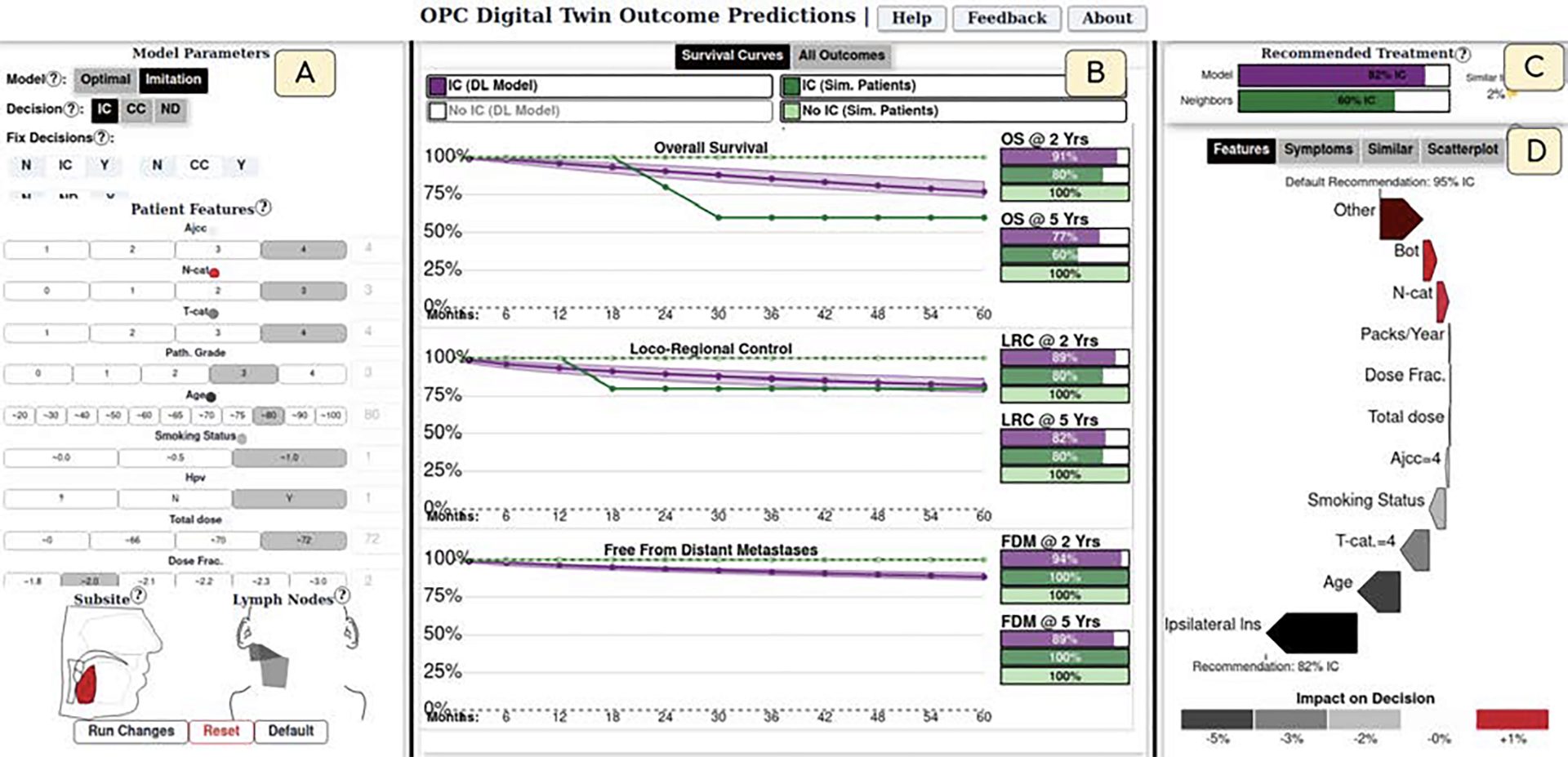DITTO: A Visual Digital Twin for Interventions and Temporal Treatment Outcomes in Head and Neck Cancer
July 18th, 2024
Categories: Applications, Software, User Groups, Visualization, Visual Analytics, Data Science

Authors
Wentzel, A., Attia, S., Zhang, X., Canahuate, G., Fuller, C.D., Marai. G.E.About
Digital twin models are of high interest to Head and Neck Cancer (HNC) oncologists, who have to navigate a series of complex treatment decisions that weigh the efficacy of tumor control against toxicity and mortality risks. Evaluating individual risk profiles necessitates a deeper understanding of the interplay between different factors such as patient health, spatial tumor location and spread, and risk of subsequent toxicities that can not be adequately captured through simple heuristics. To support clinicians in better understanding tradeoffs when deciding on treatment courses, we developed DITTO, a digital-twin and visual computing system that allows clinicians to analyze detailed risk profiles for each patient, and decide on a treatment plan. DITTO relies on a sequential Deep Reinforcement Learning digital twin (DT) to deliver personalized risk of both long-term and short-term disease outcomes and toxicity risk for HNC patients. Based on a participatory collaborative design alongside oncologists, we also implement several visual explainability methods to promote clinical trust and encourage healthy skepticism when using our system. We evaluate the efficacy of DITTO through quantitative evaluation of performance and case studies with qualitative feedback. Finally, we discuss design lessons for developing clinical visual XAI applications for clinical end users.
Index Terms: Medicine; Machine Learning; Application Domains; High Dimensional data; Spatial Data; Activity Centered Design
Resources
URL
Citation
Wentzel, A., Attia, S., Zhang, X., Canahuate, G., Fuller, C.D., Marai. G.E., DITTO: A Visual Digital Twin for Interventions and Temporal Treatment Outcomes in Head and Neck Cancer, IEEE Trans. Vis. Comp. Graphics, pp. 1-11, July 18th, 2024. https://doi.org/10.48550/arXiv.2407.13107